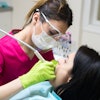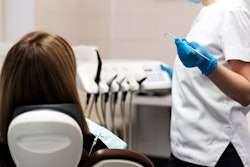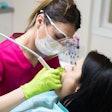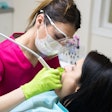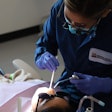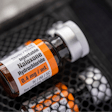
Deregulating dental hygienists' scope-of-practice rules, like administering nitrous oxide, at state levels may not have the sweeping benefits that advocates expect, according to a study that was published on July 17 in Health Economics.
Lifting regulations on some tasks for dental hygienists may slightly reduce patient wait times for new and existing patients and offer other small benefits, however, it may make dentists more inclined to take more Medicaid patients, but it didn't meaningfully affect factors like labor input, the authors wrote.
"Scope of practice deregulation has fairly modest impacts on the dental practice," wrote the authors led by, Kamyar Nasseh, PhD, of the ADA Health Policy Institute in Chicago.
Regulations that limit a worker's scope of practice can affect how much time dental practice employees spend working to provide care and how patients they provide services.
To determine how lifting certain state-level regulations for dental hygienists affected labor at practices, survey data from 1989 to 2014 and a stacked difference-in-differences design were evaluated, according to the study.
When states gave hygienists the authority to administer local anesthesia or nitrous oxide, it did not have a statistically significant effect on the number of employed dental hygienists or assistants. It wasn't until the third year after deregulation that practices saw a small statistically significant rise in the total number of dental hygienists (about a 16% increase from the sample average; p <0.10). Additionally, deregulation failed to have a statistically significant effect on the number of dentists in the practice, the author wrote.
Furthermore, scope-of-practice deregulation had a modest effect on output at practices. In the first year after deregulation, dentist visits declined by about six visits per week (about a 10% decline from the sample average; p <0.01). However, those figures rebounded in the second and third years after policy changes.
In the first year after deregulating the administration of either nitrous oxide or local anesthesia, dental appointment wait times for new and current patients fell by about one and two days (p <0.01).
Finally, giving dental hygienists the authority to administer local anesthesia or nitrous oxide to patients increased provider participation in government insurance programs like Medicaid. Dentists were 8% more likely (p <0.10) to participate in public insurance programs, but with much of the effect occurring during the third year after deregulation, they wrote.
Nevertheless, the study was not without shortcomings. Though the study sheds light on how deregulation may affect other areas of healthcare, the results were specific to the administration of anesthesia and nitrous oxide by hygienists and caution be used when attempting to generalize, the authors wrote.
In the future, studies should explore whether bigger practices are more inclined to settle in states with less restrictive practice regulations and whether these practices locate in low-cost areas. This has the potential to lead to higher revenues at the expense of patient safety, they wrote.
"Scope of practice deregulation in regards to dental hygienists' ability to administer nitrous oxide or local anesthesia is associated with fewer dentist visits per week in the short-term, lower patient wait times, and an increased likelihood of treating lower revenue generating publicly insured patients," Nasseh et al wrote.

